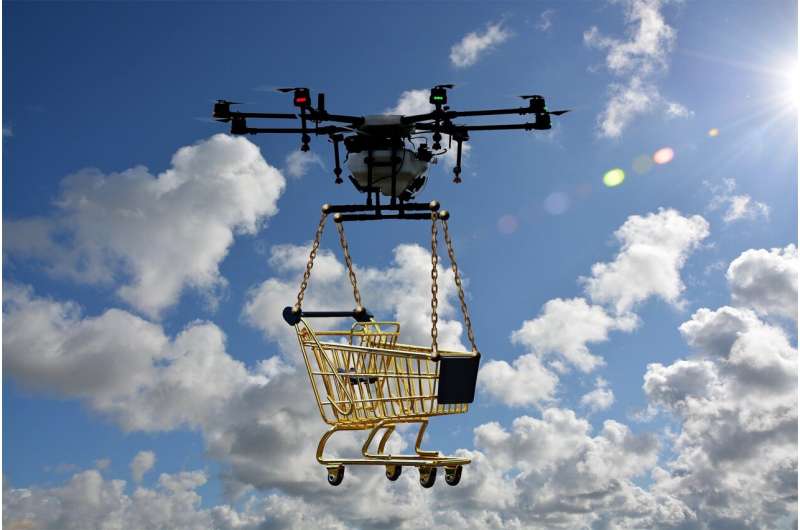Commercial UAVS have potential to halve CO2 emissions for freight deliveries

Commercial unmanned aerial vehicles (UAVs) have the potential to almost halve the carbon dioxide (CO2) emissions of urban freight transport compared to small light commercial vehicles (LCVs), providing an unprecedented opportunity for the logistics industry to reduce its environmental impact. This is just one of the breakthrough findings from a brand new report published today by Inmarsat, the world leader in global, mobile satellite communications, and Cranfield University, examining the wealth of new possibilities and applications unlocked by commercial UAVs.
As part of the report, "UAVs: Unlocking positive transformation in the world," Cranfield University used its own modeling and primary data resources to compare the CO2 emissions emitted by UAVs and LCVs. An LCV delivering 10 similar sized packages per 8-hour shift over a 5km delivery radius, and following a regular schedule of consecutive deliveries, produces an estimated CO2 emission rate of 3,394 grams per 24 hours (3 shifts). In contrast, a large-sized UAV with a 50kg payload operating in the same delivery protocol as the LCV produces 1,800 grams of emissions per 24 hours, a 47 percent reduction.
Alternatively, a medium-sized UAV with a 36km range, carrying a 5 kg payload under less-than-optimal operating pattern (making separate individual journeys from the central warehouse rather than making consecutive deliveries) was estimated to produce 2,160 grams of carbon dioxide emissions over 24 hours—a significant reduction of 36 percent compared to the equivalent LCV road transport.
The report, which analyzes both new and existing research, also identifies the many other commercial advantages provided by UAVs to organizations that embrace the technology and adopt new operational methods, with cost and time savings leading to enhanced supply chain and business efficiencies. In addition, it explores the considerable benefits that extend beyond those driven by commercial gain, such as delivering humanitarian and medical aid to remote communities and conflict zones, surveillance to protect endangered animals from poachers and monitoring for illegal deforestation or mining operations.
Professor Dame Helen Atkinson DBE FREng, Cranfield University's pro-vice-chancellor of the School of Aerospace, Transport and Manufacturing, said: "Commercial UAVs have the potential to transform our world in a range of safe and environmentally friendly ways. This report is an important step in harnessing the power of UAVs and unlocking the opportunities they offer to advance air transport activities and services with fast and efficient delivery of goods."
Over the next seven years, the commercial UAV market is projected to increase from $2.32 billion in 2021 to $11.29 billion in 2028, marking a compound annual growth rate (CAGR) of 25.39 percent during this period. Despite this positive outlook, the new report also recognizes the regulatory challenges in allowing UAVs to fly beyond visual line of sight (BVLOS) and integrate with other air traffic, as well as the need for well-structured regulation that defines the roles and responsibilities of all stakeholders that utilize airspace.
Anthony Spouncer, Inmarsat's senior director of UAVs and unmanned traffic management (UTM), said: "Our new report with Cranfield University is packed with valuable insights that reinforce the positive and far-reaching impact of commercial UAVs on numerous aspects of society and business. However, it's also clear that unless autonomous vehicles and unmanned aviation are safely and securely integrated into managed airspace, their true potential cannot be unlocked on a commercial scale.
"Inmarsat is uniquely placed to deliver airspace integration with our recently launched Velaris UAV connectivity solution, working side-by-side with global regulators, air navigation service providers, UAV operators and an international partner network. Powered by our global ELERA L-band satellite network, Velaris will deliver new digital automation capabilities, allowing operators to send drones on long distance flights and access applications, including real-time monitoring, to ensure safe integration with other air traffic users. As the UAV industry evolves, so will Velaris, thanks to our fully-funded technology roadmap."
More information: UAVs: Unlocking positive transformation in the world. www.inmarsat.com/uavreport
















